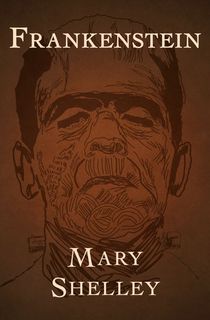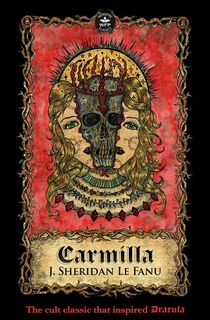Unhappy love triangles have always played a starring role in the realm of Gothic literature. Think of Emily Bronte’s 1847 Wuthering Heights and the legendary tug-of-war over Catherine Earnshaw between a well-meaning neighbor and the mysterious, destructive rogue hell-bent on having her and her inheritance all to himself. Or Gaston Leroux’s 1909 Phantom of the Opera, in which a deranged ghost and a gentle childhood friend vie for the love of a lovely singer torn between her loyalties to them both.
These plotlines, such loyal disciples of the ascendency of Gothic fiction that started with Horace Walpole’s The Castle of Otranto in 1764, had to start somewhere. They flourished, and rotted away into heartbreaking nothingness, in real life as well as on the page. Consider Percy Shelley, Mary Shelley, and John Polidori, Romantic-Era superstars and time-defying gossip magnets.
Trigger Warning: This article contains mentions of suicide.
John William Polidori (1795-1821) as a character, was…unique. Unique, even for the age that wringed out the legions of unbearable eccentrics who peppered Jane Austen’s social satire comical fiction.
Polidori stood out. He was born in Westminster, the multicultural offspring of Italian scholar Gaetano Fedele Polidori and English educator Anna Maria Pierce. This was a family that cleverly made its way in the world through books. Polidori, despite the moody personality that had surfaced young and continued to float in his early adulthood, was expected to follow suit.

John William Polidori, by F.G. Gainsford (floruit 1805-1822), given to the National Portrait Gallery, London in 1895.
Photo Credit: Public DomainIn 1810, he studied at the University of Edinburgh, where he penned an unusual thesis on the practice of sleepwalking at a time where his peers were showing off with more conventional and sophisticated topics. In 1815, he obtained his medicinal degree and was subsequently recruited as a personal physician by the undisputed, unchallenged leader of the rampaging British Romantic movement, Lord George Byron. Byron recognized in this neurotic young doctor a fellow nonconformist and decided that he was the perfect accompanist for his travels abroad. What Byron didn’t realize was that he was personally leading Polidori to the great tragic love of his life.
The year was 1816. Mount Tambora had erupted and engulfed Europe into a freezing near-apocalypse. Ferocious rains and storms reigned over the lands, and 1816 was resultingly dubbed The Year Without a Summer. Byron, Polidori, Byron’s lover Claire Clairmont, and writers Percy and Mary Shelley (who were together but not yet married) took shelter in Villa Diodati on Lake Genera in Switzerland.
Rumour rampaged through the local towns that the group was conducting orgies and other unholy acts, and people were even setting up telescopes from a distance to spy on them. What was actually going on was an entirely different story. Byron and Claire Clairmont were enjoying each other’s company, yes, but Mary Shelley was behaving disappointedly chaste with her own admirer, Polidori.
Polidori’s infatuation with Mary Shelley followed the same pattern that firstly attracted Percy Shelley to the young blossoming female genius. He fell in love with her beauty first, and then her mind. There was also a preestablished respect for her parentage: she was the sole scion of revered philosophers William Godwin and Mary Wollstonecraft. Mary Shelley was a rare woman indeed, prestigious and polished. She was a novelty. She was impressive. Polidori very quickly fell in love.
Polidori also quickly discovered that Shelley’s firm and agile resolve was an insurmountable barricade to both his flirtatious advances and to the growing popularity of polyamory among the bohemian sets of the Romantic Age. Shelley was—rigidly, defiantly, bizarrely—devoted to her lover. She may have lured Percy away from his first wife, Harriet, but she would not be lured away from her committed relationship herself. She had no interest in emulating her mother Mary Wollstonecraft, who notoriously proposed to the wife of her paramour, painter Henry Fuseli, that they civilly share his attentions and his bed (an offer that was refused by the outraged spouse).
But Polidori wasn’t deterred from trying anyway. Perhaps he was hoping that Shelley had inherited more from her mother than her brilliant intellect. His buffoonish efforts are not-so-sympathetically commented on by Mary Shelley’s biographer Charlotte Gordon in Romantic Outlaws: The Extraordinary Lives of Mary Wollstonecraft and Her Daughter Mary Shelley:
“He confessed his love, hoping Mary would welcome his advances; after all, she had scorned the social code by living openly with Shelley and bearing his children. Perhaps she would welcome a new suitor.”
Polidori, cutting such a laughable figure, soon became the target of some rather cruel bullying and monstrous pranks from his companions. Especially Byron, who had a sadistic streak and was bored by Lake Geneva. Roseanne Montillo records such incidents in her The Lady and Her Monsters: A Tale of Dissections, Real-Life Frankensteins, and the Creation of Mary Shelley’s Masterpiece:
“June 15 had not been a good day for Polidori. Earlier that morning, while perched on a balcony overlooking the lake, he had been urged by Lord Byron to hoist himself up and jump off its parapet. The Shelley Party had been heading toward Villa Diodati, and Byron, who had become aware of the younger man’s feelings for Mary and of his excessive sensitivity, had assured Polidori that such an acrobatic act would impress her. It did not, and he ended up spraining his ankle, which became more painful when Byron persuaded him to read aloud one of his plays. His rendition of the play, and the play itself, were thought of as useless and were relentlessly ridiculed for hours.”

The Lady and Her Monsters
Shelley and Polidori’s relationship remained strictly platonic, much to Polidori’s distress, and even the luscious background of rural Switzerland couldn’t inspire a forbidden romance to bud. Being part of the same closeknit writers’ circle was as close as they would get to being part of an amorous polycule.
They were both participants in the famous writing contest proposed by Byron during The Year Without a Summer. Desperate to relieve their debilitating boredom from being stuck indoors due to the bad weather, which was threatening to weaken their powerful minds, Byron challenged his houseguests to write ghost stories, with the winner receiving bragging rights (as none of them had money or goods to spare).
Here Shelley triumphed over Polidori in fiction as well as love. While she produced the first chapters of a novel which would come to be known as Frankenstein, or The Modern Prometheus, Polidori only produced the short story “The Vampyre.” Not that his accomplishment was anything to raise one’s nose at. It was the first of its kind, the very first fully developed vampire story.
But Mary still won the contest. How could she not? Everybody knows Frankenstein, and everybody knows her. This, like the monster before Dr. Frankenstein stole the necessary organ from a corpse, is a no-brainer. When Mary and Percy left Lake Geneva together, she made off with the bragging rights, and the jagged pieces of Polidori’s shattered heart.
Polidori never married, nor did he ever achieve grand literary success or fortune in his short lifetime. He died poor and possibly still yearning for the ever-evasive Mary Shelley in his father’s house in London in 1821. He was only twenty-five years old, the same age John Keats died. The staggering rejection, along with his mounting gambling debts and a black depression that plagued him all of his life, dragged him down into a despair from which he could not be rescued.
It is widely believed that he may have taken his own life with prussic acid, but scholars and historians are divided on this. His health was never strong to begin with, and the real culprit might have been natural causes. He left behind no children, either legitimate or illegitimate, but at least with “The Vampyre,” he left behind a legacy. Vampire mania started with him, and his unrequited love for Mary Shelley, from which he most likely invented the character of Ianthe, the beautiful, irresistible intellectual woman who is fated never to be with the hero of the story.
On Valentine’s Day, dejected lovers everywhere can play tribute to poor Polidori’s life and work by indulging in either one of the aforementioned Gothic romantic classics or some heavy and gruesome vampire fiction.
This writer recommends, as something of a spiritual sequel to “The Vampyre,” Sheridan Le Fenu’s 1872 “Carmilla,” which not only has a vampire, but a lesbian vampire. In the late nineteenth century, of all times!
Or, for readers with more contemporary tastes, John Ajvide Lindqvist’s 2004 Let the Right One In is a gnarly read and full of delightfully dysfunctional relationships.
And for the ultimate vampire love triangle, there is always Stephanie Meyer’s Twilight series. Refrain, perhaps, from thinking of the Shelley-Shelley-Polidori love triangle in terms of Team Polidori and Team Shelley. They were real people, after all. And they’re all too dead for any more drama.

The Vampyre
“He thought, in fine, that the dreams of poets were the realities of life.”—John Polidori, “The Vampyre.”



